Hot Chips 2020 Live Blog: AMD Ryzen 4000 APU (Noon PT)
by Dr. Ian Cutress on August 17, 2020 3:00 PM EST- Posted in
- CPUs
- AMD
- APUs
- Live Blog
- Renoir
- Ryzen 4000
- Hot Chips 32
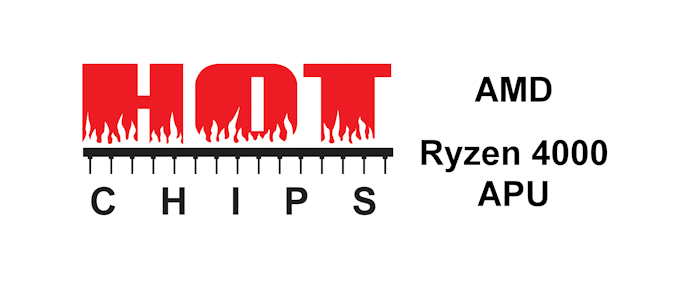
02:49PM EDT - Next up is AMD's Ryzen 4000 Renoir talk.
03:02PM EDT - Sonu Arora from AMD, AMD Fellow
03:02PM EDT - SoC architect
03:03PM EDT - Best notebook processor selling today
03:03PM EDT - First 8-core x86 for ultrathin notebooks
03:03PM EDT - Beaten goals we set for ourselves
03:03PM EDT - Evolution based on desire to break linear trend of performance
03:04PM EDT - Initially planned with 6 cores, but SoC/Power curves enabled 8 cores
03:04PM EDT - Made room for ST, MT, GPU, and Battery Life
03:04PM EDT - Renoir vs Picasso
03:04PM EDT - +25% ST, +200% MT, +27% GPU, 20% less SoC Power
03:05PM EDT - Decide how much to push ST without compromising GPU or Power
03:06PM EDT - Renoir is a complete SoC
03:06PM EDT - 8C/16T with 8MB L3
03:06PM EDT - 2nd gen Multimedia, 3rd gen Audio
03:07PM EDT - Added more IO to keep up with modern notebook requirements
03:07PM EDT - PCIe up from 16 to 20 in mobile package, 20 to 24 in desktop package
03:08PM EDT - Covered Zen 2 at Hot Chips last year
03:08PM EDT - 512 KB L2/core
03:08PM EDT - 4 cores in a core complex
03:09PM EDT - 2 core complexes into Renoir
03:10PM EDT - +15% IPC ST on top of +10% FMax
03:10PM EDT - Low power design methodology, can turn off segments when not in use
03:10PM EDT - Better idle-to-turbo latency
03:11PM EDT - Performance vs Intel's 10th Gen (Comet) at 15W and 45W
03:11PM EDT - Improved gaming experience
03:12PM EDT - Reduce CUs from 11 to 8, but higher frequency, better IPC, optimized devices for throughput and power, 77% higher peak bandwidth
03:12PM EDT - 2 render backends and 1MB L2 cache
03:12PM EDT - Optimize for pJ/bit
03:13PM EDT - -61% area vs 11CUs on 14nm, but +27% perf
03:13PM EDT - total 225% perf density on graphics
03:14PM EDT - Support DDR4-3200 and LPDDR4-4267
03:14PM EDT - 75% better power efficiency for Infinity Fabric
03:14PM EDT - Lot of time on the floor plan to reduce memory latency
03:15PM EDT - IF power gating focused for GPU bandwidth
03:16PM EDT - Renoir delivers CPU perf and GPU perf
03:16PM EDT - Different power states in Renoir in order to optimize exit/enter latency
03:16PM EDT - OS can decide to go to deeper low power states on lower idle
03:17PM EDT - (deeper sleep takes longer to reach peak power)
03:17PM EDT - 20% reduced SoC power
03:17PM EDT - aggressive L3 power gating
03:17PM EDT - lower power IOs
03:19PM EDT - STAPM uses system temperature in order to budget the turbo and boost
03:20PM EDT - 4x increase in boost duration
03:20PM EDT - Also simplifies OEM design for thermal boosting
03:20PM EDT - 3rd gen Audio
03:21PM EDT - Supports Native USB-C
03:21PM EDT - DP 1.4 with HBR3
03:21PM EDT - Four QHD60, or three QHD144
03:22PM EDT - next gen multimedia
03:22PM EDT - AMD Integrated Device Translation (AIDA)
03:22PM EDT - Enables Microsoft PlayReady with reduced UMA dedicated memory frame buffer
03:23PM EDT - AMD 25x20 energy efficiency initiative. AMD achieved 31.7x, beating 25x target from 2014
03:24PM EDT - Renoir built across 8 different AMD R&D Centers and offices
03:24PM EDT - Q&A time
03:27PM EDT - Q: Melt, Spectre? A: Melt doesn't impact AMD. Zen 2 has hardware mitigations for Spec v2/v4. Added Guest mode execution, virtualization security, IOMMU throughput, TME
03:29PM EDT - Q: 8 cores in this size, trade offs? A: We wanted to provide the 8 core perf, and as we analyzed with 7nm that if we took care we could enable 8 cores. Lots of content creation takes advantage of 8 cores. These come in handy with high perf applications. On the GPU, we were also careful in perf/watt and perf/mm2 that we can drive. We figured out in 7nm we could get higher frequency, so we balanced resources and that's why we went for 8 CUs. Vega with mem bandwidth gives better UX in 15W
03:30PM EDT - Next rpesentation is Tiger Lake!


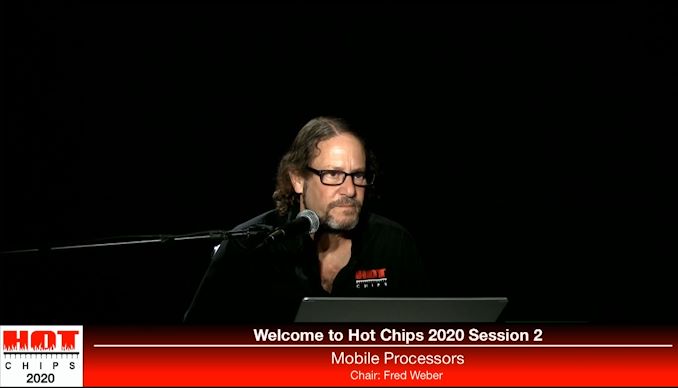
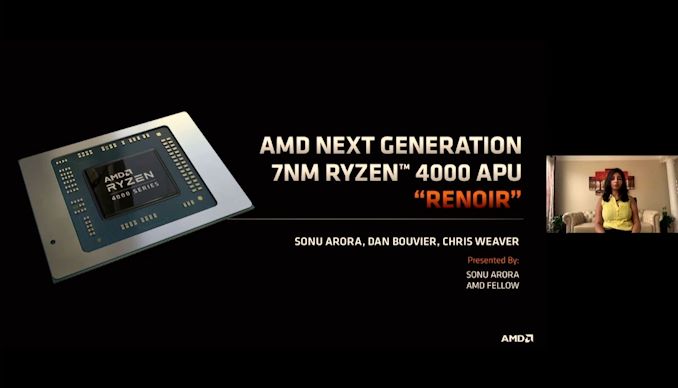
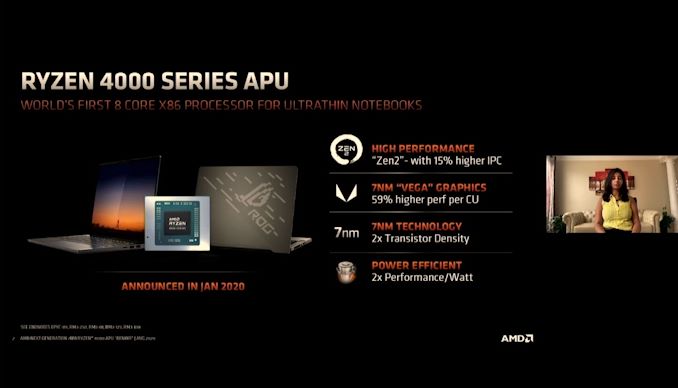
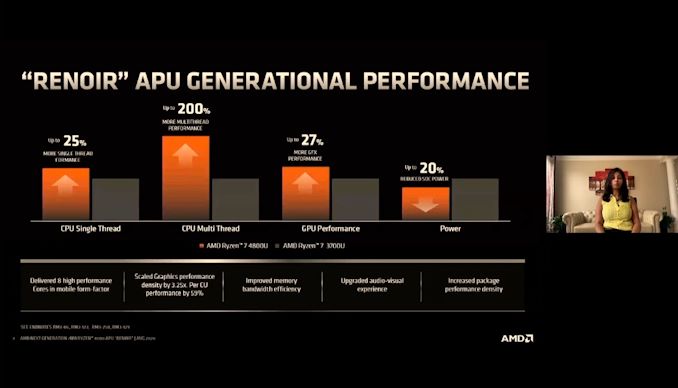
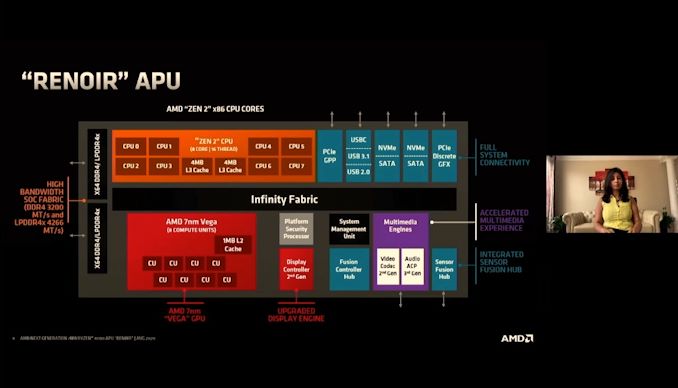
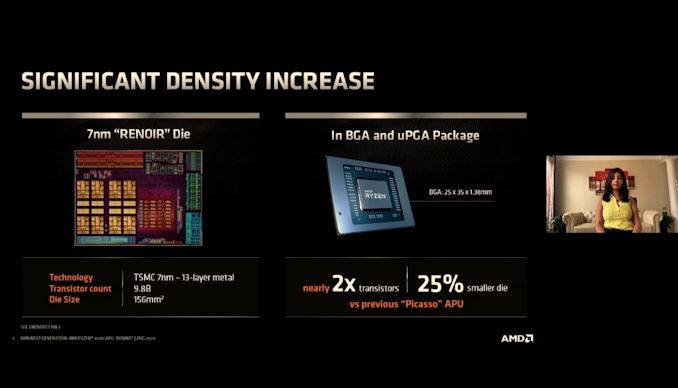
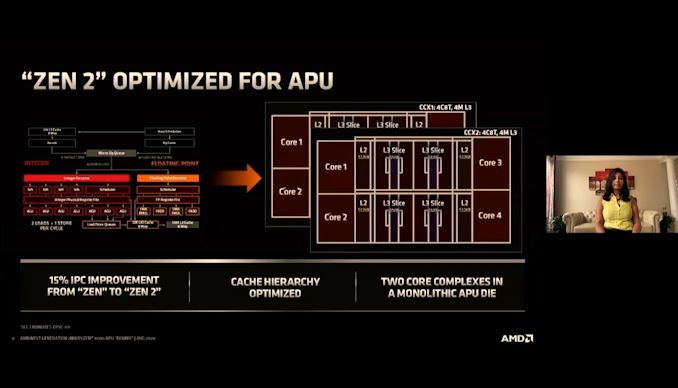
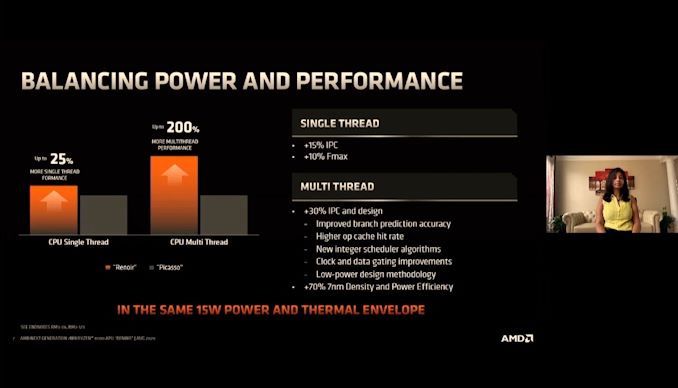

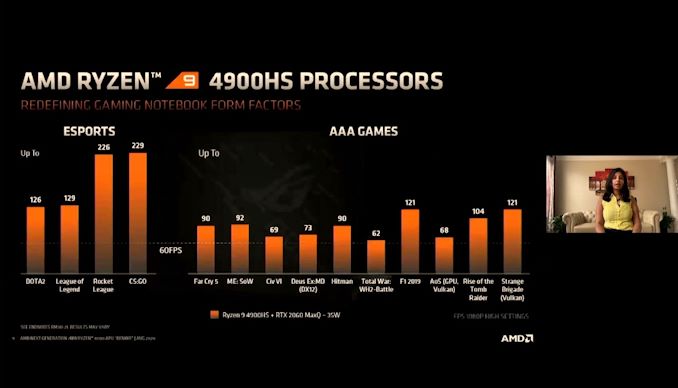
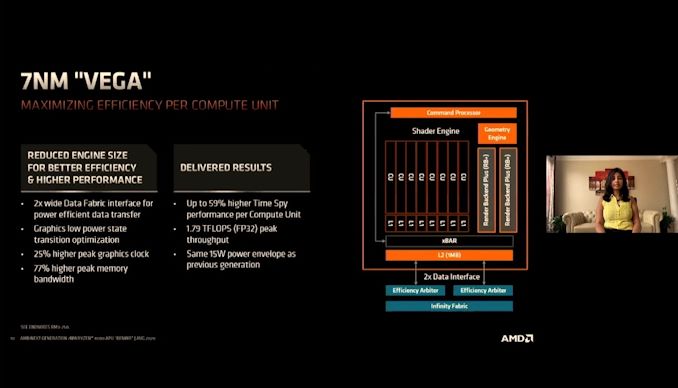
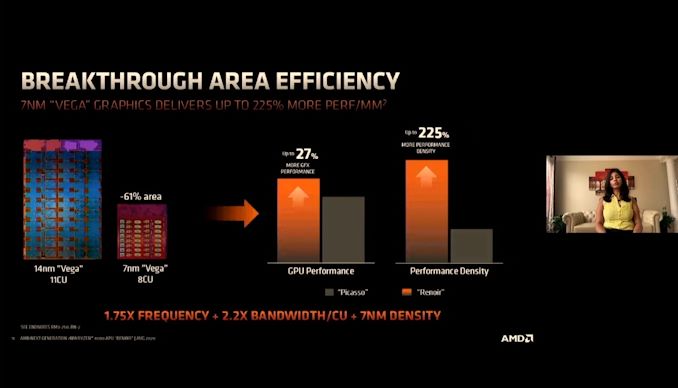
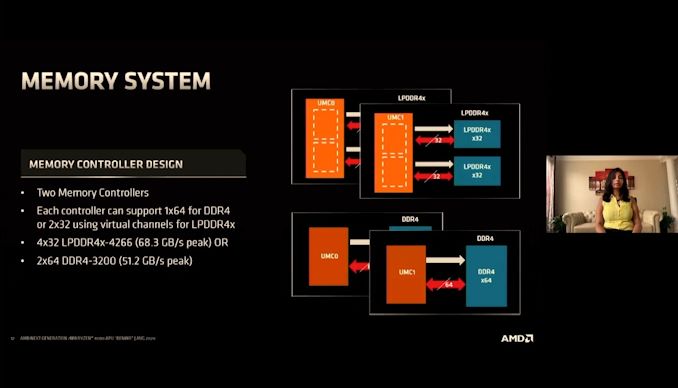
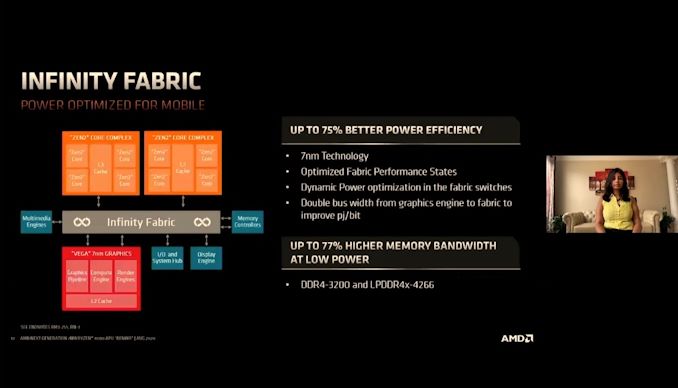


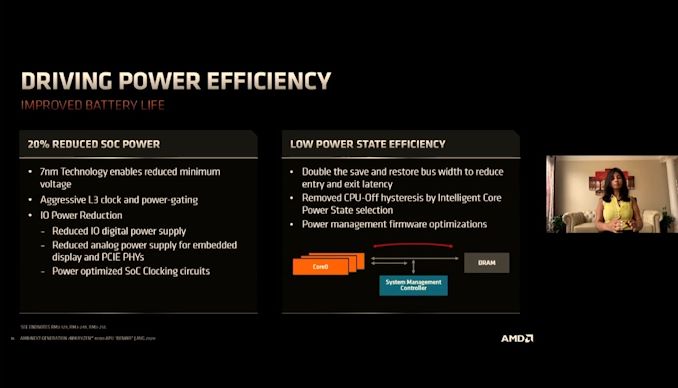
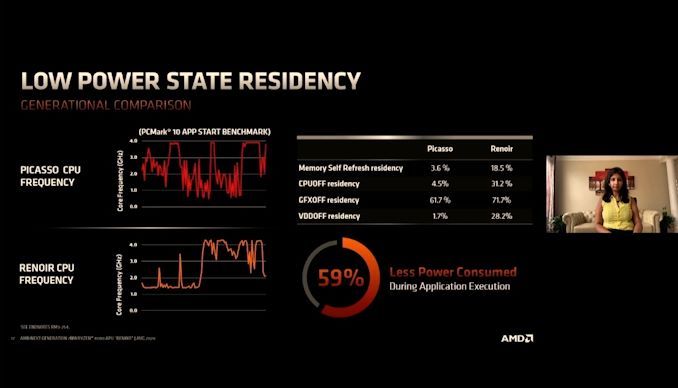
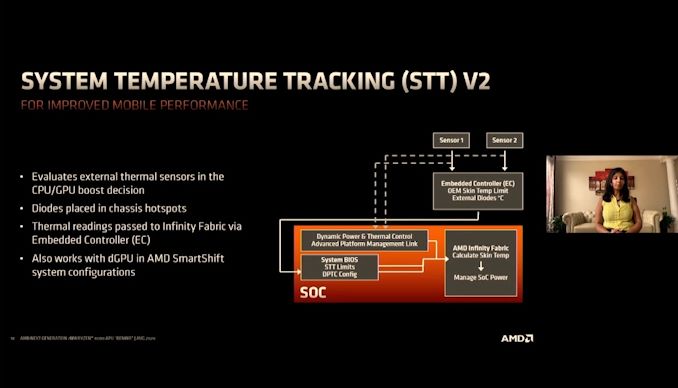
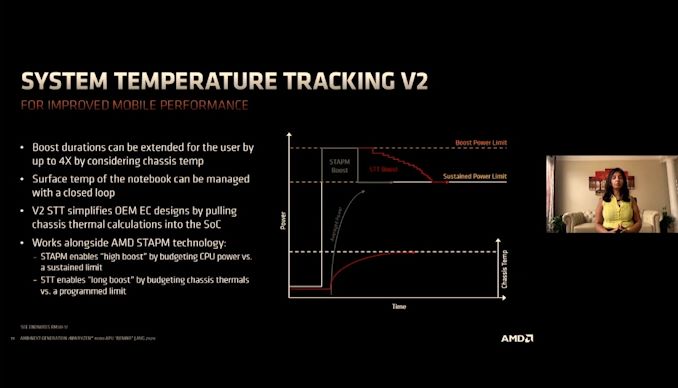
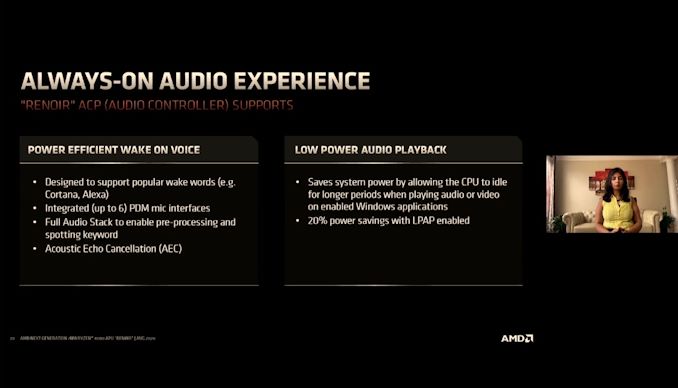
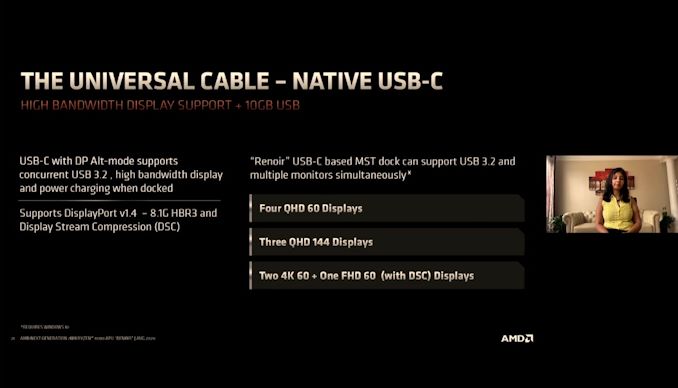
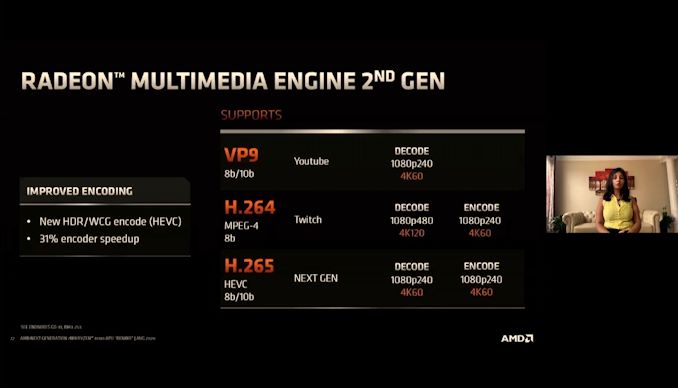
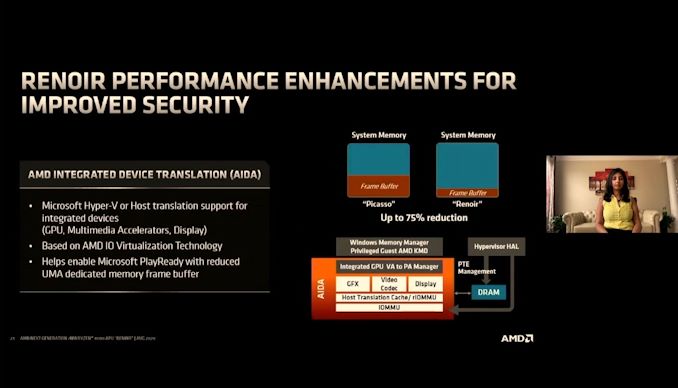
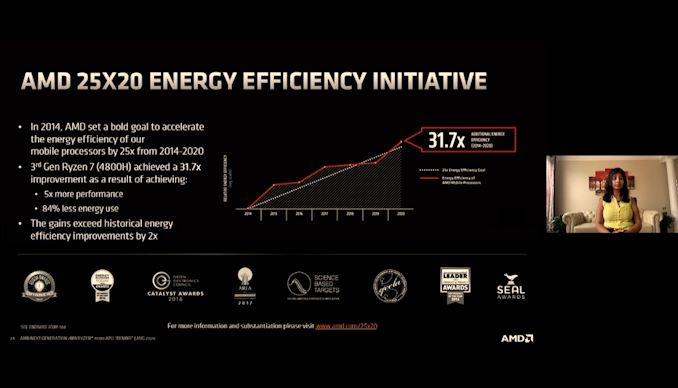
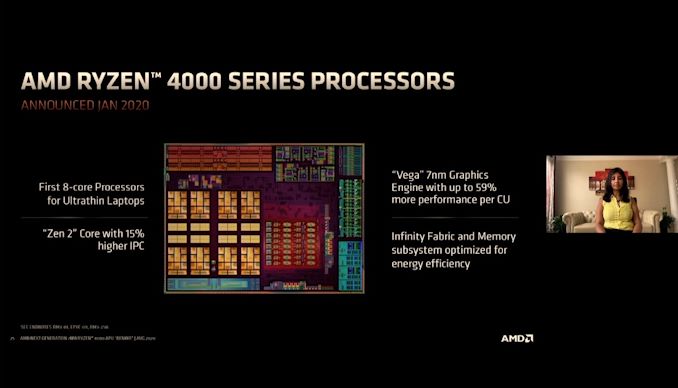
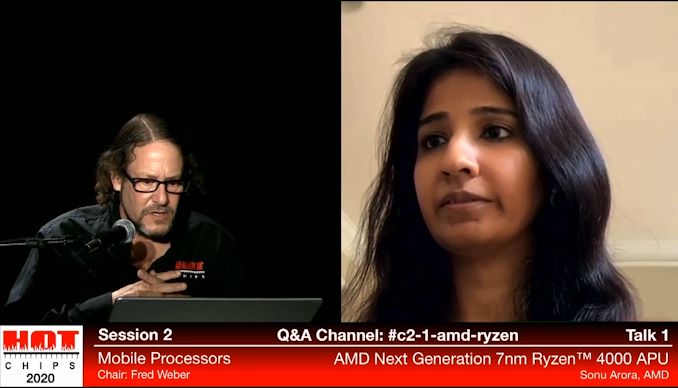








14 Comments
View All Comments
frbeckenbauer - Monday, August 17, 2020 - link
and already the first interesting thing I didn't know, that it was originally planned as a hexacore. That might explain the overly cautious deployment in lower end devices than appropriate for the incredible performance.neblogai - Monday, August 17, 2020 - link
They were speaking of ultrathin laptops there, so I undestand that only SKUs for U-series would go up to 6 cores, even if the die was an 8-core.As for the laptops being 'lower end'- that is probably due to AMD's image in laptops, and selling power when it comes to laptop buyers, as well as very few financial 'incentives' from AMD to make premium devices. Still, Renoir is not present only in very high end (but should be soon- with MS device(s)). But there are not that many entry tier devices with Renoir either. Most are right at the midrange/the sweet spot.
RollingCamel - Wednesday, August 19, 2020 - link
AMD 10-K annual report specifies that 2019 growth was driven by a 22% increase in average unit price and an increase of 4% in units shipment.brantron - Monday, August 17, 2020 - link
I had wondered about that. Hexacore with a single core complex and larger L3 cache at least sounded better on paper.But turns out it's fine the way it is. Desktop Renoir at high clocks will be hard to tell apart from anything else, a first for AMD's APUs.
Probably some benefit to mass producing one die for everything, as well.
scineram - Tuesday, August 18, 2020 - link
My reading of the Q&A is it was always this die, but they expected to only enable 6 cores.JayNor - Monday, August 17, 2020 - link
Is there some difference in meaning between the white decode and orange decode info in the next gen multimedia slide at 3:22?Ian Cutress - Monday, August 17, 2020 - link
orange = 4kkenansadhu - Tuesday, August 18, 2020 - link
Any news on Zen 3 mobile? Is it going to launch anytime soon?yeeeeman - Tuesday, August 18, 2020 - link
nopeshabby - Tuesday, August 18, 2020 - link
Zen 2 mobile just launched, maybe next year.